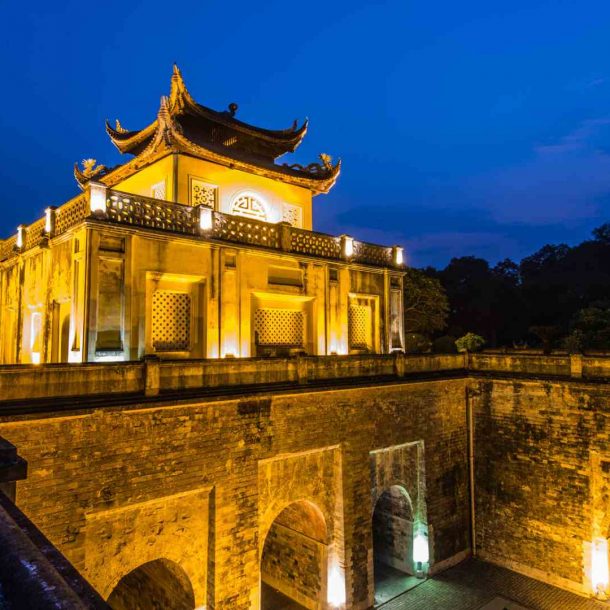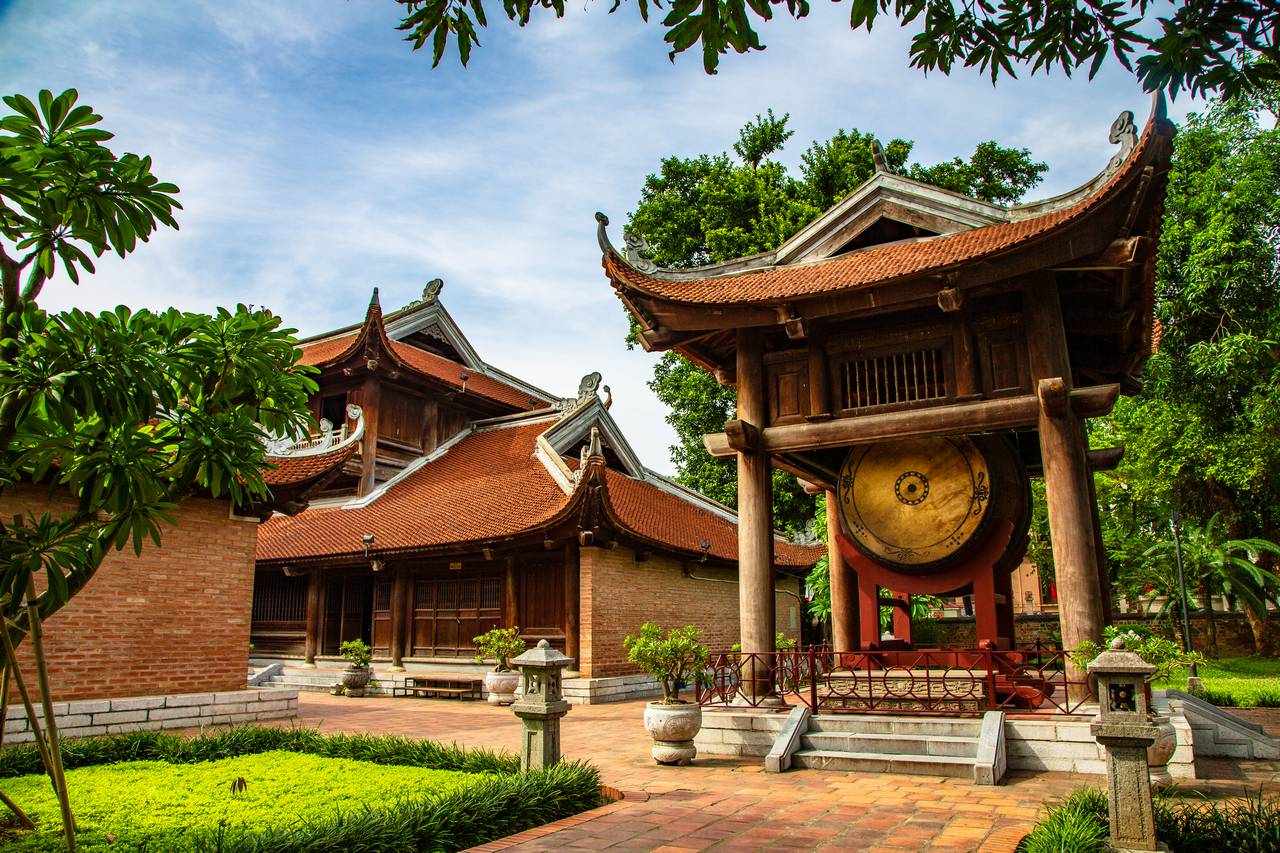
In the heart of Hanoi, amidst the vibrant streets and modern developments, stands a testament to Vietnam’s rich intellectual heritage – the Temple of Literature. Often referred to as “Văn Miếu,” this historic site holds the distinction of being Vietnam’s first university. In this article, we’ll take you on a journey through time and explore the significance and cultural splendor of the Temple of Literature.

A Legacy of Learning
Founded in 1070 during the reign of Emperor Lý Thánh Tông, the Temple of Literature was established to honor Confucius and his teachings. It soon evolved into the nation’s first university, where scholars came to study Confucianism, literature, and the arts. This academic tradition continued for centuries, making it a revered center of learning in Vietnam.
Architectural Grandeur
The Temple of Literature is a striking example of traditional Vietnamese architecture. The complex features five courtyards, each with its own unique layout and purpose. The architecture is designed to reflect the philosophical and cultural values of Confucianism, emphasizing harmony and balance.
The Stelae of Doctors
One of the most significant aspects of the Temple of Literature is the collection of stone stelae, known as the “Stelae of Doctors.” These stelae, erected in 1484, bear the names of scholars who successfully passed the royal examinations held at the temple. It’s a tribute to the pursuit of knowledge and academic excellence.
Literary Traditions
The temple complex houses various pavilions, altars, and statues dedicated to Confucius and other scholars. It also serves as a place of worship and reflection, where visitors can pay homage to Confucius and celebrate Vietnam’s literary traditions.
Symbol of Culture and Education
The Temple of Literature is more than a historical site; it’s a symbol of culture and education in Vietnam. It stands as a testament to the nation’s reverence for scholarship, learning, and the preservation of its cultural heritage.
Visiting the Temple
Today, visitors can explore the Temple of Literature to gain insight into Vietnam’s intellectual history. The site includes a museum with exhibits related to its history and significance. Strolling through the serene courtyards and admiring the traditional architecture provides a tranquil escape from the city’s hustle and bustle.
Practical Information
The Temple of Literature is not just a relic of the past; it’s a living testament to Vietnam’s dedication to knowledge and culture. A visit to this historic site is an opportunity to step into the world of ancient scholars, to pay homage to the pursuit of wisdom, and to appreciate the enduring legacy of Confucian values in Vietnamese society. The Temple of Literature remains a cherished symbol of pride and intellect for the Vietnamese people and a must-visit destination for those seeking to explore the cultural essence of Hanoi.